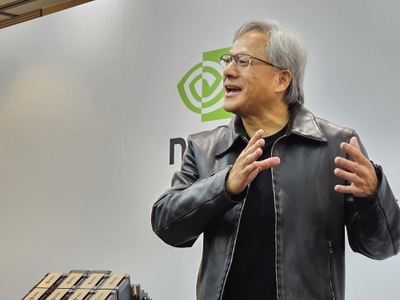
Nvidia on Tuesday reported record revenue of $18.12 billion for the third quarter of fiscal year 2023, marking a 206% increase year-over-year and a 34% rise from the previous quarter, driven by a significant shift towards generative AI.
There's seemingly no end to demand from AI-related applications, which Graphics Processing Units (GPUs) excel at computing.
However, there's a growing concern from analysts about how much souring Sino-US relations - with China being a large market for chips - will dampen demand for chips, and just how much fab capacity is available to supply chip-hungry companies.
Nvidia faces uncertainty and anticipates a negative long-term impact on its China business due to export controls, with an unclear magnitude of the effect.
"The export controls will have a negative effect on our China business. And we do not have good visibility into the magnitude of that impact even over the long-term," Colette Kress, Nvidia's CFO shared on the earnings call.
Kress pegs China's share of data center revenue at 20-25% and expects Nvidia's guidance for that to decrease substantially as we move into Q4.
"I think that China will impact future earnings; anyone would be foolish to ignore the impact," said Anshel Sag, Principal Analyst at Moor Insights & Strategy.
Sag did note that the world is still experiencing a GPU shortage, and "the gap between China's demand and pent-up demand within the rest of the world will more than be made up for."
Nvidia maintains lion's share in AI chips
Nvidia is projected to have about 85% of the generative AI chip market next year between its H100 and H200 chips, according to a note published by Raymond James analyst Srini Pajjuri.
But these chips largely require export licenses.
In October, the US Department of Commerce introduced new rules to tighten export controls on advanced computing and semiconductor manufacturing, targeting China’s military-civil fusion and AI development strategies.
Nvidia is working with some customers in China and the Middle East to pursue licenses from the US government, Kress said, adding that Nvidia is also working to expand its data center portfolio to offer compliant chips.
Fab capacity is still a concern
Tech companies continue to wrestle with maintaining a supply of access to fabs, where the chips are made, and this has become increasingly difficult.
During the call, Nvidia CEO Jensen Huang re-assured investors that the company is "expanding our supply quite significantly" and that Nvidia has the "largest and most capable supply chain in the world," but, in his own words, supply chains are "complicated," especially for next-generation AI chips.
"Fab capacity is yet another bottleneck that Nvidia has to overcome," Moor Insights & Strategy's Sag said. "Nvidia will likely improve the supply situation with increased capacity next year, but I'm not sure it will fully resolve capacity issues next year."
Sag suggests that Nvidia's use of monolithic dies -- as opposed to AMD's chiplet architecture -- presents a challenge in managing production capacity efficiently, impacting both the yield and cost per chip.
Monolithic dies are single, large pieces of silicon containing an entire chip’s circuitry, while chiplets are smaller, modular pieces of silicon combined to form a complete chip, offering greater flexibility and potentially lower costs.
"AMD is capitalizing on Nvidia's limited capacity," Sag said.
Reliance on manufacturing partners
Like many companies that design chips and do not manufacture them, Nvidia relies on Taiwan Semiconductor (TSMC) as a production partner, specifically for its latest 3nm process node.
TSMC is currently racing to build out increased capacity for this process node with additional factories planned for Japan.
At the recent APEC summit in San Fransisco, Morris Chang, TSMC's founder, met with Japanese Prime Minister Fumio Kishida to discuss enhancing their semiconductor partnership.
Local media in Taiwan report that TSMC already has a high demand for availability on its 3nm process node, driven by high demand from major tech companies for advanced AI chips and new iPhones.
Financial analysts say that the relatively high cost of using the node is expected to boost TSMC's revenue growth significantly.
GPUs and AI everywhere
The AI revolution is generally putting intense pressure on chip designers as well as chip makers to pump out more processors to meet demand, but it is also having downstream effects.
Nvidia recently announced that its new AI-ready ethernet protocol, Spectrum-X, is available from major server manufacturers.
Spectrum-X is essential for "successfully deploying Generative AI workloads is the infrastructure and networking capabilities needed to support them," according to Deepika Giri, one of IDC's lead analysts in Asia.
There's also a geopolitical element. Countries are building up sovereign AI infrastructure "to support economic growth and industrial innovation," as Kress said in the earnings call, not wanting to cede this ability to foreign governments, which in turn boosts demand for GPUs. "Market dynamics are expected to become more interesting next year, with constraints still present; however, both Nvidia and AMD should perform well despite China's restrictions, as other countries outside the US also invest in AI and require GPUs," Sag said.